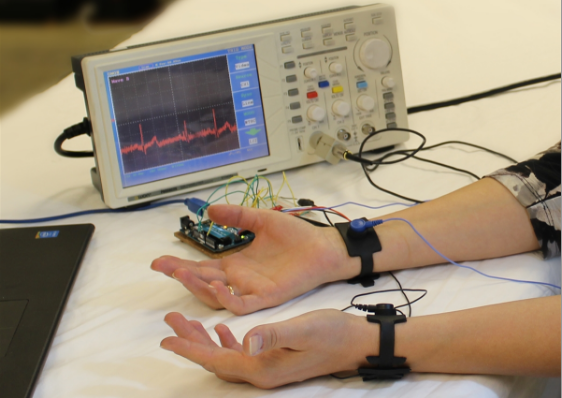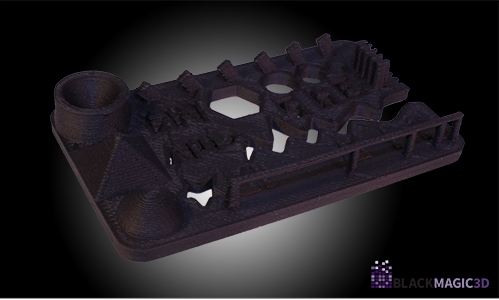Graphene 3D Lab Introduces New Conductive Flexible TPU Filament for 3D Printed Wearable Electronics, Medical Devices and More
 Graphene 3D Lab‘s business is pretty obvious just from their name: they manufacture and sell graphene 3D printing materials. As graphene is the wonder material of the moment, that’s not a bad thing to be known for – but Graphene 3D Lab does a lot more than just develop graphene materials. They also produce what we could call “ordinary” 3D printing materials, i.e., non-graphene, but there’s really nothing ordinary about any of them at all.
Graphene 3D Lab‘s business is pretty obvious just from their name: they manufacture and sell graphene 3D printing materials. As graphene is the wonder material of the moment, that’s not a bad thing to be known for – but Graphene 3D Lab does a lot more than just develop graphene materials. They also produce what we could call “ordinary” 3D printing materials, i.e., non-graphene, but there’s really nothing ordinary about any of them at all.
Graphene 3D Lab’s other 3D printing materials include magnetic and other specialty PLA filaments, as well as their recently introduced line of flexible filaments. Today, the company announced that they have added to their flexible materials with a new conductive filament. Conductive Flexible TPU Filament combines Graphene 3D Lab’s rubber-like TPU (thermoplastic polyurethane) material with highly electrically conductive properties that make it ideal for flexible electronics.
“We are thrilled to be releasing such an innovative filament to our ever-evolving product line,” said Elena Polyakova, co-CEO of Graphene 3D Lab. “The upgrades made to our production facility equipment and extensive research performed by our staff has given us the opportunity to now offer an exciting new product that will feature two of the most highly sought after 3D printing properties: flexibility and conductivity.”
Potential applications for the new material include flexible sensors, flexible conductive traces and electrodes to be used in wearable electronic devices, as well as medical devices, pressure-sensitive buttons, digital keyboards and trackpads, electromagnetic/radiofrequency shielding, and much more. (Note: Graphene 3D Lab recommends the material for low-current applications of no more than 12 volts.)
“Additive manufacturing is enabling technology for small innovative companies that use 3D printing to make their prototypes. By adding the Conductive Flexible TPU Filament to our product line of functional 3D printing filaments, we have expanded the capabilities of 3D printing, thereby shortening the road from the development to the commercial application. We believe that our new filament will perform well in thriving entrepreneurial communities such as with developers of new wearable electronics products,” said co-CEO Daniel Stolyarov.
Conductive Flexible TPU has a volume resistivity of <1.25 Ω-cm and a hardness of Shore 90 A. A few of Graphene 3D Lab’s recommended printing parameters include:
- Extruder temperature: 210°C
- Platform temperature: 20-50°C
- Print speed: 2400 mm/min
- Nozzle size: >0.4 mm
Conductive Flexible TPU is currently available from BlackMagic3D, their online material store. The material, which is available in 1.75 mm diameter, is a matte black color and is priced at $45 for a 100 gram spool. It’s the second conductive filament offered by Graphene 3D Lab, which also introduced a conductive graphene filament last year. Conductive Flexible TPU, however, is not only physically more flexible but more versatile in terms of applications – particularly as electronics advance into more sophisticated areas like wearables. Discuss further in the Graphene 3D Flexible TPU filament forum over at 3DPB.com.
Subscribe to Our Email Newsletter
Stay up-to-date on all the latest news from the 3D printing industry and receive information and offers from third party vendors.
You May Also Like
3D Printing Financials: voxeljet’s Financial Reshuffle
In a series of significant announcements made on March 13, 2024, voxeljet (Nasdaq: VJET) has revealed a plan to reshape its financial structure and strategic direction. As part of these...
Japanese Aerospace Leader Invests in 3DEO and Its Metal 3D Printing Tech
Los Angeles-based metal 3D printing startup 3DEO has announced a key investment from IHI Aerospace Co., Ltd. (IA), a subsidiary of Japanese manufacturing leader IHI. This collaboration marks a significant...
2025 Renault 5 E-Tech Electric Is Latest Car with 3D Printed Accessories
Due to the required numbers, additive manufacturing (AM) has struggled to make significant inroads into vehicle interiors in meaningful numbers—at least as far as public knowledge is concerned. Typically an...
Interview: NAGASE Facilitates AM Adoption with EMPOWR3D 3D Printing Brand
The additive manufacturing (AM) market is entering a new phase in which large companies from outside of the segment have entered and begun consolidating. In reality, this trend has been...

































